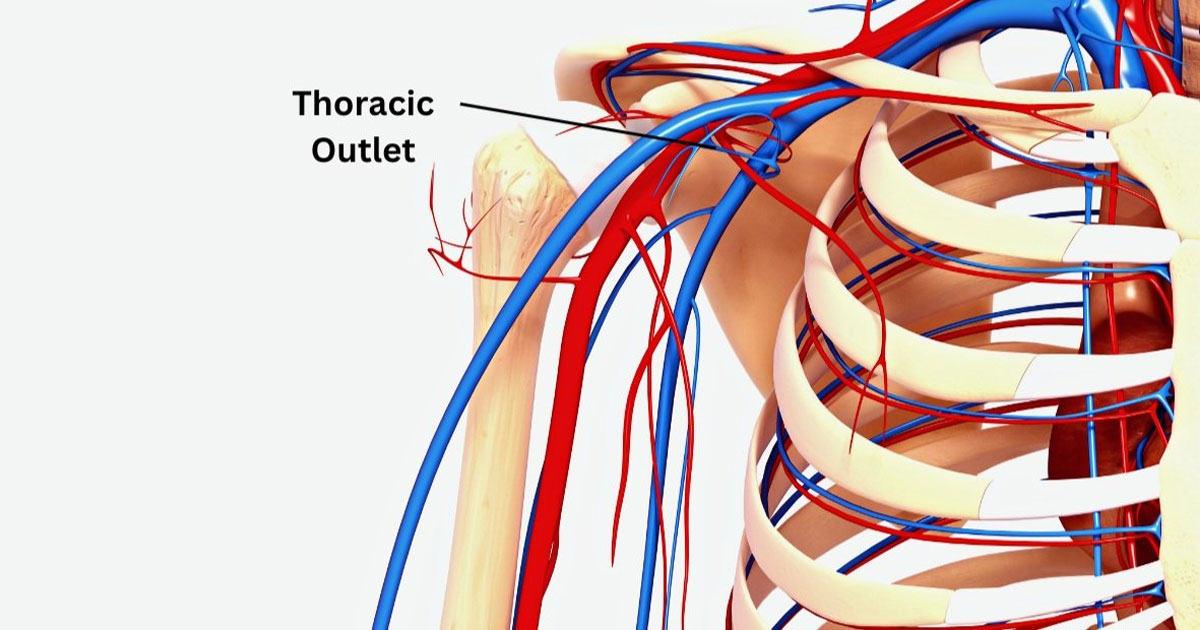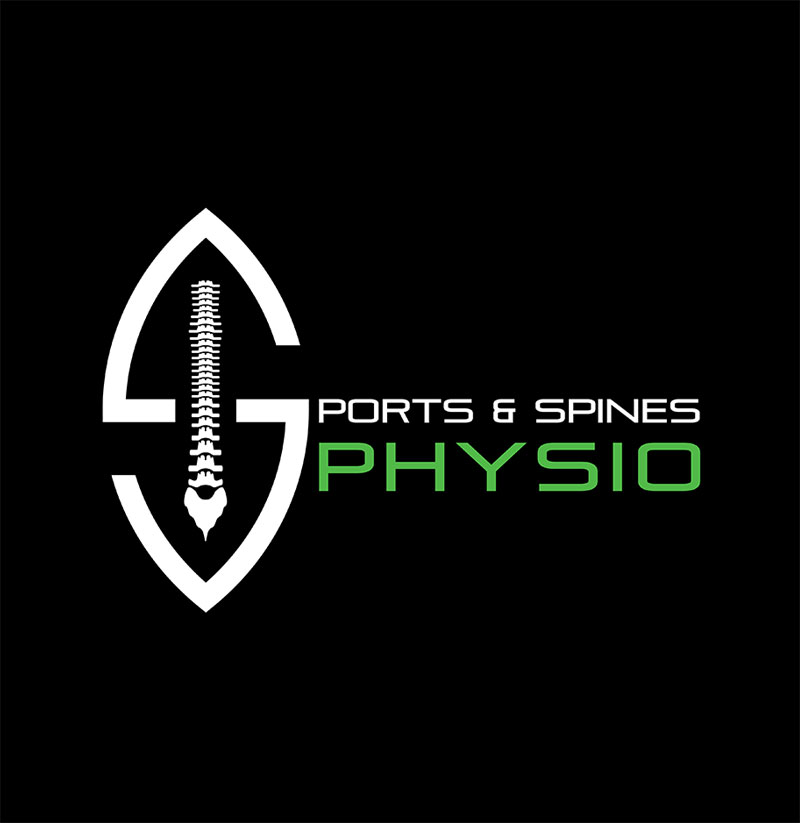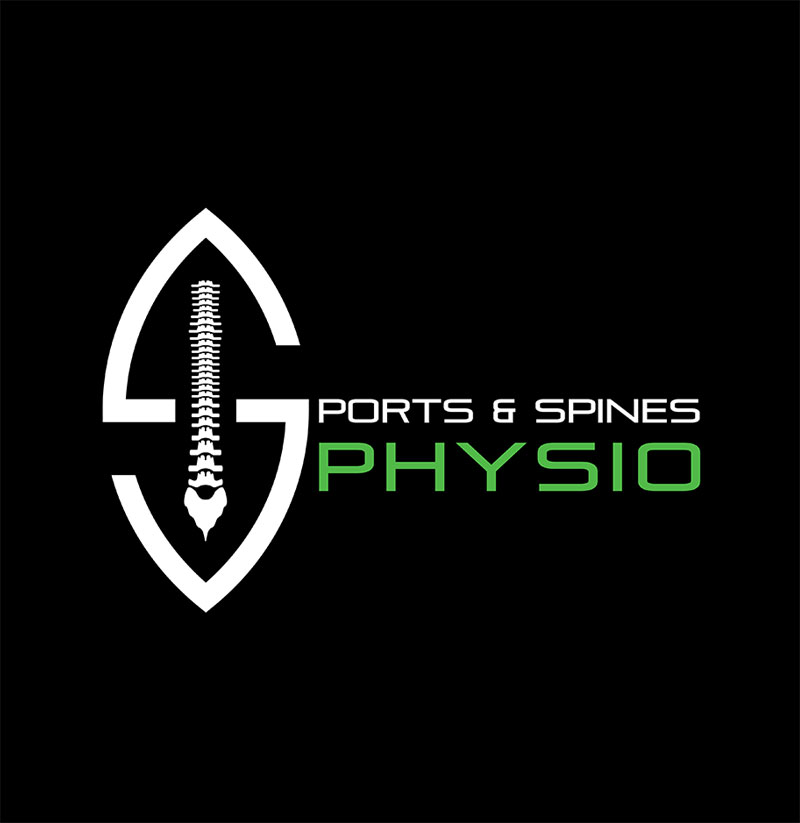
Thoracic Outlet Syndrome (TOS)
Thoracic outlet syndrome (TOS) is a condition characterized by compression of the nerves and blood vessels that pass through the thoracic outlet, a narrow passageway between the base of the neck and the armpit.
What factors contribute to thoracic outlet syndrome?
Several factors can contribute to the development of thoracic outlet syndrome, including anatomical variations, trauma, repetitive movements, and certain medical conditions. Below are some common causes and contributing factors of thoracic outlet syndrome:
1. Anatomical Variations: Variations in the anatomy of the thoracic outlet can predispose individuals to thoracic outlet syndrome. These variations may include:
- Abnormalities in the bony structures of the thoracic outlet, such as an extra rib (cervical rib) or an elongated C7 transverse process.
- Narrowing of the thoracic outlet due to congenital anomalies or developmental abnormalities.
- Presence of fibrous bands or other soft tissue structures that compress the nerves and blood vessels in the thoracic outlet.
2. Trauma or Injury: Trauma to the neck, shoulder, or upper extremities can lead to thoracic outlet syndrome by causing structural damage or inflammation in the thoracic outlet region. Common types of trauma that may contribute to TOS include:
- Motor vehicle accidents
- Falls
- Sports injuries, particularly those involving repetitive overhead movements or direct impact to the shoulder or neck.
3. Repetitive Movements: Engaging in repetitive activities or movements that involve the arms, shoulders, and neck can increase the risk of developing thoracic outlet syndrome. Repetitive motions can lead to muscle imbalances, tightness, and inflammation, contributing to compression of the nerves and blood vessels in the thoracic outlet. Examples of activities associated with TOS include:
- Repetitive lifting or carrying heavy objects.
- Prolonged or repetitive overhead work, such as painting, carpentry, or assembly line work.
- Continuous typing or computer use with poor ergonomics.
4. Muscular Imbalances: Imbalances in the muscles surrounding the thoracic outlet can affect the stability and function of this region, leading to compression of the nerves and blood vessels. Weakness or tightness in certain muscle groups, such as the pectoral muscles, scalene muscles, and muscles of the neck and shoulder girdle, can exacerbate thoracic outlet syndrome symptoms.
5. Congenital Factors: Some individuals may have congenital predispositions or genetic factors that increase their susceptibility to thoracic outlet syndrome. These factors may include inherited anatomical variations, connective tissue disorders, or developmental abnormalities affecting the thoracic outlet structures.
6. Medical Conditions: Certain medical conditions and diseases can predispose individuals to thoracic outlet syndrome or exacerbate existing symptoms. These conditions may include:
- Cervical rib abnormalities
- Thoracic outlet tumours or masses (e.g., Pancoast tumours)
- Poorly controlled diabetes
- Thyroid disorders
- Rheumatoid arthritis
- Brachial plexus injuries or neuropathies
It's important to note that thoracic outlet syndrome can have multiple contributing factors, and individual cases may involve a combination of anatomical, biomechanical, and physiological factors. Proper diagnosis and management of TOS typically require a comprehensive evaluation by a healthcare professional, including a thorough medical history, physical examination, and diagnostic tests such as imaging studies and nerve conduction studies.
How can physiotherapy help with thoracic outlet syndrome?
Physiotherapy plays a crucial role in the management of thoracic outlet syndrome (TOS) by addressing underlying musculoskeletal imbalances, improving posture, and reducing compression of the nerves and blood vessels in the thoracic outlet region. The goals of physiotherapy treatment for TOS are to alleviate pain, improve functional mobility, and restore optimal musculoskeletal function. Below are some common physiotherapy interventions and techniques used in the treatment of thoracic outlet syndrome:
1. Postural Education and Correction: Physiotherapists assess and educate individuals with thoracic outlet syndrome about proper posture and body mechanics to reduce strain on the thoracic outlet structures. Postural correction techniques may include:
- Ergonomic assessments and recommendations for workplace modifications.
- Instruction on maintaining a neutral spine, relaxed shoulders, and open chest.
- Exercises to strengthen postural muscles and improve awareness of posture during daily activities.
2. Stretching and Range of Motion Exercises: Stretching exercises targeting tight muscles and improving joint mobility can help alleviate compression and tension in the thoracic outlet region. Common stretches for thoracic outlet syndrome may include:
- Pectoralis major and minor stretches to open the chest and shoulders.
- Levator scapulae stretches to release tension in the neck and shoulder muscles.
- Scalene stretches to reduce compression on the brachial plexus and blood vessels.
3. Strengthening Exercises: Specific strengthening exercises are prescribed to improve the stability and function of the muscles surrounding the thoracic outlet. Strengthening the muscles of the shoulders, neck, and upper back can help support proper posture and alleviate pressure on the nerves and blood vessels. Examples of strengthening exercises for TOS include:
- Scapular stabilization exercises to strengthen the muscles that control shoulder blade movement.
- Rotator cuff exercises to improve shoulder stability and function.
- Rhomboid and trapezius strengthening exercises to support proper shoulder alignment.
4. Manual Therapy Techniques: Manual therapy techniques such as soft tissue mobilization, myofascial release, and joint mobilization may be used to reduce muscle tension, improve joint mobility, and alleviate pain in individuals with thoracic outlet syndrome. These techniques can target tight or restricted tissues in the neck, shoulders, and upper back to restore optimal musculoskeletal function.
5. Nerve Gliding Exercises: Nerve gliding exercises aim to improve the mobility and flexibility of the nerves that pass through the thoracic outlet, thereby reducing nerve compression and symptoms such as pain, tingling, and numbness. Nerve gliding exercises involve gentle, controlled movements that encourage the nerves to glide smoothly within their surrounding tissues.
6. Postural Taping: Taping techniques may be used to provide external support and facilitate proper alignment of the thoracic outlet structures. Postural taping can help reduce muscle fatigue, improve proprioception, and promote optimal posture during activities of daily living.
7. Patient Education and Self-Management Strategies: Physiotherapists provide education on lifestyle modifications, activity modification, and self-management strategies to empower individuals with thoracic outlet syndrome to manage their symptoms effectively. This may include:
- Education on ergonomic principles and proper lifting techniques.
- Instruction on self-massage techniques, foam rolling, and use of therapeutic tools for self-care.
- Guidance on incorporating regular exercise and physical activity into daily routines to maintain musculoskeletal health.
It's important to note that the specific physiotherapy interventions prescribed for thoracic outlet syndrome may vary depending on individual needs, symptom severity, and underlying contributing factors. A comprehensive assessment by a qualified physiotherapist is essential to develop an individualized treatment plan tailored to each patient's unique presentation and goals. Additionally, collaboration with other healthcare professionals, such as doctors and occupational therapists, may be beneficial for holistic management of thoracic outlet syndrome.

